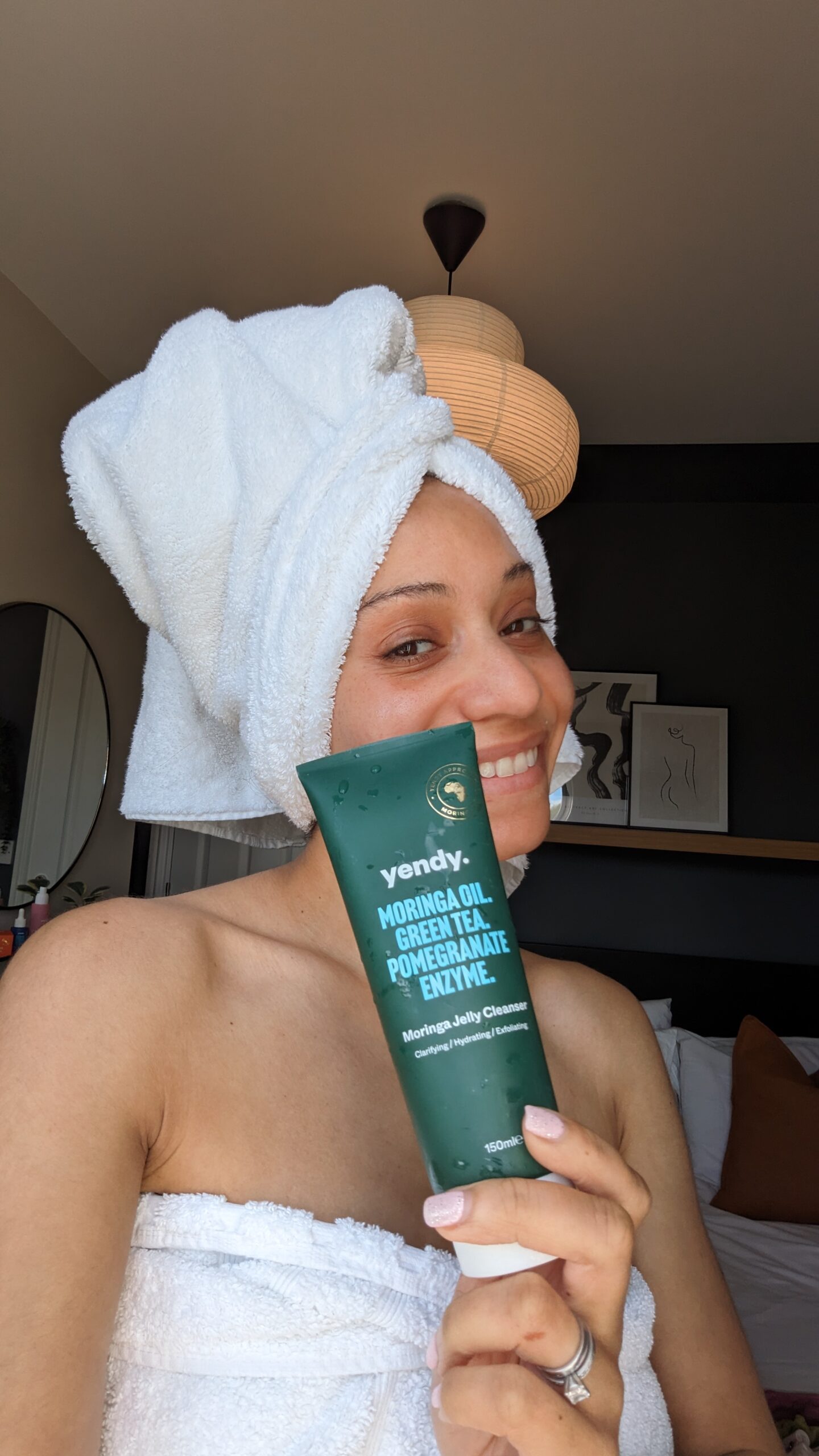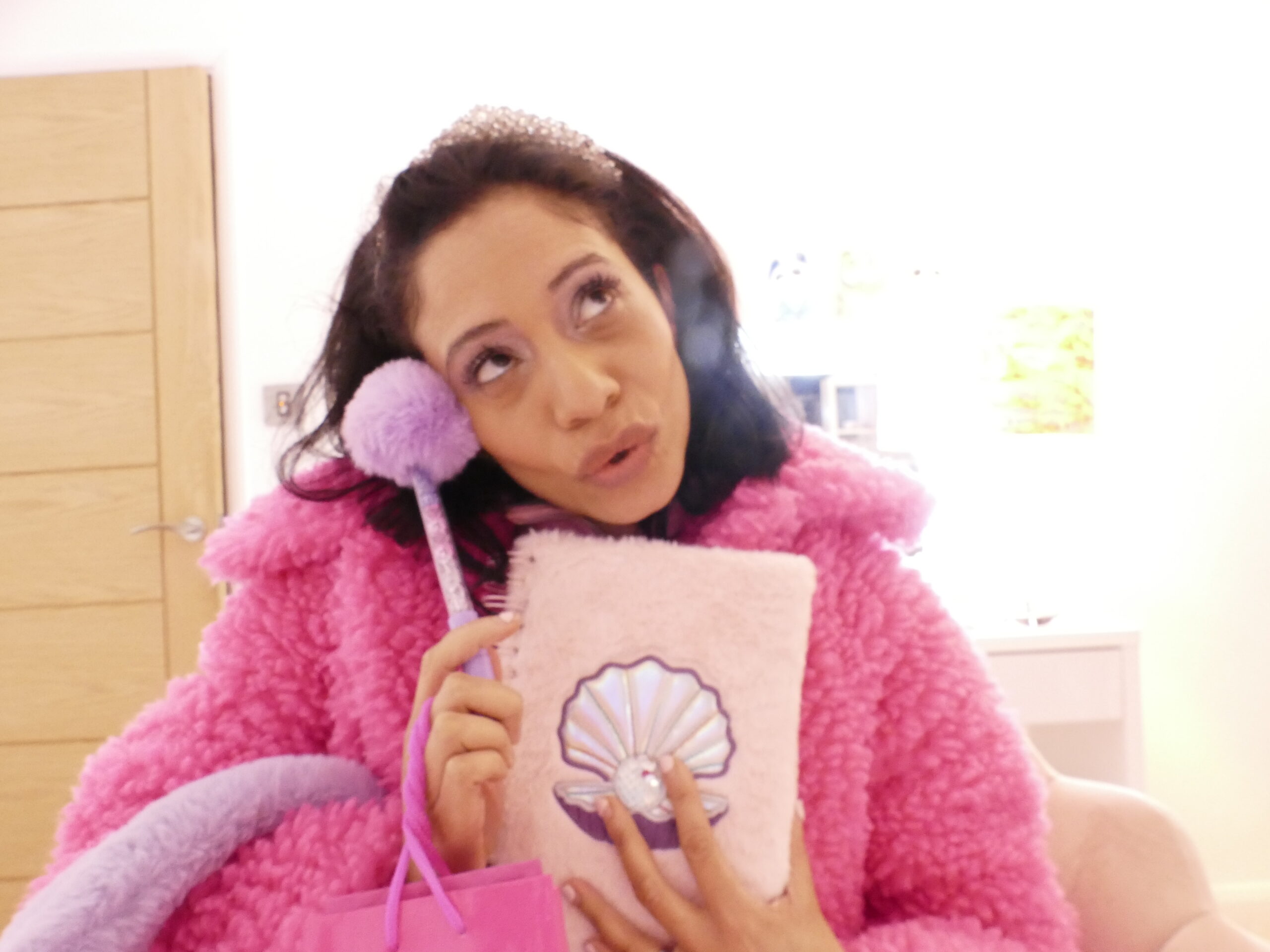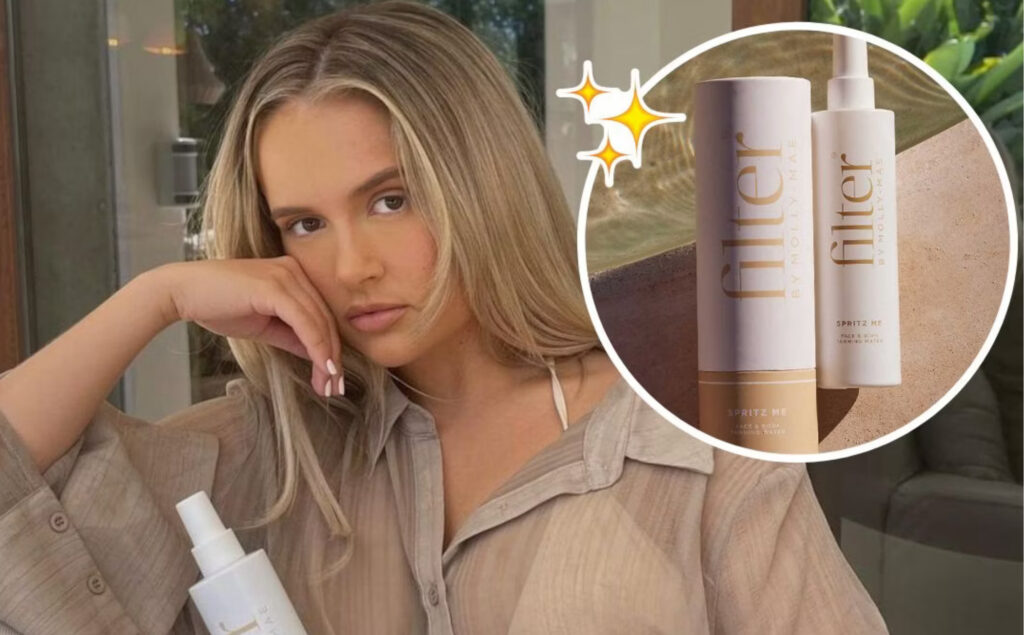Hi Guys, a huge welcome back to my blog! Starting a beauty brand is no easy feat – especially if you have a small budget, no marketing experience and already holding down a full-time job!
I wanted to share my own experience. Back in 2015 I launched my hair supplement brand I’ve always been a beauty product junkie and at the time I was working as a marketing freelancer. With whatever savings I could scramble together , I ploughed them into researching the best nutrients for hair growth: I share my story here:
I came up with the ingredients list, found a reliable UK-based supplier, bought a sample order of my supplements and was absolutely terrified. Over the next six months I started experimenting with Instagram marketing and the rest is history.
I share the inner workings of how I launched my supplement brand on my business blog here:
7 tough, fun, stressful and exhilarating years later I sold my Hair vitamins brand and I share that process here:
With this in mind, I wanted to share everything I learnt about building a successful brand!
In a rush? Here’s everything I cover in case you need to skip through:
- Identifying Your Unique Cosmetic Brand Vision
- Understanding Your Target Audience in the Cosmetic Industry
- Developing a Unique Selling Proposition for Your Makeup Brand
- Creating a Business Plan for Your Makeup Brand
- Ensuring Regulatory Compliance in the Cosmetic Industry
- Uncover Workflow Inefficiencies
- Create a Digitally Organized Workspace
- Project Management is Vital
- Minimize Distractions
- Negotiating Supplier Contracts for Your Cosmetic Business
- Creating a Striking Product Design for Your Makeup Range
- Effective Marketing Strategies for Your Home-Based Cosmetic Business
- Building a Strong Online Presence for Your Brand
- The Importance of Networking in the Cosmetic Business
- Conclusion
Identifying Your Unique Cosmetic Brand Vision
You need a clear vision! This vision encapsulates the essence of your brand and lays a roadmap for its future. The process, while seemingly daunting, can be simplified by focusing on the heart of what makes your brand distinctive. This includes identifying your ideologies, values, and the unique qualities inherent in your products. To get started, ask yourself, what is your brand’s objective? What value are you bringing to your consumers that other makeup brands aren’t? Answering these questions will allow you to craft a compelling and unique brand vision that differentiates you from the competition.
Being clear about your brand vision isn’t just a formality – it’s a necessity that shapes your decision-making process and influences your business growth trajectory.
When I started It Really Works Vitamins I had a very clear idea of the brand in mind – Men’s Health Cover Star for Hair

Understanding Your Target Audience in the Cosmetic Industry
Having pinpointed your vision for your cosmetic brand, the following step you need to take is to identify and truly understand your target audience. You’ll want to ask yourself, who are they? What kind of cosmetics are they interested in? What drives their purchasing decisions? The answers to these questions will shape your branding, product development, and marketing strategies.
- Your target audience may include different demographics such as age, gender, income level or lifestyle preferences. Each demographic will have its unique cosmetic needs and preferences.
- Audience interests can vary widely. Some may be more attracted to organic and natural products, while others may prioritize the latest fashion-forward colors and styles.
- Consumer behavior in the cosmetic industry is often influenced by product quality, brand reputation, price, and even the influence of social media trends and popular influencers.
- Geographical location can also play a role in determining your target audience. Certain beauty trends or products may be more popular in some regions compared to others.
- Last but certainly not least, certain consumer groups may be driven by ethical considerations such as cruelty-free production, eco-friendly packaging or corporate social responsibility initiatives of cosmetic brands.
Consider Estée Lauder as an example of a brand that effectively targets an older, more affluent demographic with their premium skincare and makeup products. From their sophisticated branding to their focus on anti-aging and skin health, they’ve tailored their approach to suit a specific market segment.
For young, Gen Z consumers who adore bold, on-trend colors, and don’t shy away from expressing individuality through makeup, look no further than NYX Cosmetics. Affordable, inclusive, and always releasing products tied to whatever is trending on social media, NYX delivers on what their audience wants.
Bare Minerals serves as an ideal example of a brand that has successfully tapped into the market for consumers seeking natural, clean beauty products. They’ve made their mark by offering makeup that claims to improve your skin over time, aligning with their target customer’s preferences for ingredients and formulas that are ‘free of’ harmful or unnatural chemicals.

Consumers seeking vegan and cruelty-free products often gravitate towards the vibrant and ethical brand, Lush. With their focus on handmade, fresh cosmetics and their strong stance against animal testing, they have successfully positioned themselves within this niche market.
Geographically focused brands do exist as well, such as Tarte Cosmetics that uses Amazonian clay as a key ingredient in many products, appealing to consumers who prefer exotic, region-specific ingredients.
Developing a Unique Selling Proposition for Your Makeup Brand
If you want to establish a unique place in this competitive arena, it’s crucial to conceptualize a Unique Selling Proposition (USP) to set your brand apart. This USP essentially forms the backbone of your marketing efforts and gives direction to your brand’s narrative. So, how can you create a standout USP?
Firstly, consider what is authentic about your brand or your products – something that you pride yourself on and that your customers value. Generally, the USP lies in these subtle details. Perhaps in Caitlin’s case, this could be her self-taught artistry skills that translate into one-of-a-kind makeup creation.
Next, understand what your customer wants. Delve into their desires, their needs, and how your product can cater to them uniquely. A meticulously designed makeup range that reflects the desires of your audience can serve as your USP.
Thirdly, a great USP clearly communicates your value. When your prospect hears your USP, she should get a hint of the value you offer and why she should buy from you. Hence, it’s not just about being unique but also about delivering a clear and compelling reason to opt for your product.
Lastly, remember that your USP is not set in stone. YOU ARE ALWAYS ALLOWED TO PIVOT It should evolve with your brand and adapt to your customers’ changing needs. Therefore, periodically review and refine it to ensure it continues to distinguish you in the makeup market.
Remember, a USP is not merely a catchy tagline but a solid statement of your brand’s unique benefit. It differentiates you from others in the market, delivering a promising and appealing proposition to your customers. Taking the time to craft one will pay off in the long run, and may just be the driving force behind your brand’s success.
Many notable cosmetics brands have impressive USPs that set them apart in the industry, letting them gain loyalty from their specific customer base. Here are a few noteworthy examples:
The brand L’Oreal emphasizes not only on beauty but also science. Their USP is ‘The Perfect Blend of Beauty & Science.’ They invest heavily in research and innovation, positioning themselves as a brand at the cutting edge of cosmetic science.
Bringing a pinch of whimsy to the cosmetics world is Benefit Cosmetics. Their USP, ‘Makeup Doesn’t have to be Serious to Look Good,’ speaks to their focus on creating a fun, playful experience around makeup, thus appealing to a more youthful, trendy audience.

Offering a rich blend of natural ingredients, Burt’s Bees stands out with its ‘Natural Personal Care Products.’ This brand caters specifically to consumers looking for natural, environmentally friendly alternatives.
Emphasizing the power of minimalism is Bobbi Brown. ‘Beauty Begins with You’ sums up their USP. It aims at promoting natural beauty that focuses more on a woman’s individual quirks rather than covering them up.
Fenty Beauty by Rihanna broke the barriers in the industry with the USP ‘Beauty for All’. They offer a broad range of products catering to a diverse range of skin tones, which was a revolutionary step in the cosmetics world.
By examining these USPs, you can gain valuable insights into how each brand curated a unique position in the cosmetics market. These USPs not only define their brand image but also continuously guide their product development, marketing, and overall brand strategy.
Creating a Business Plan for Your Makeup Brand
Just as a painter wouldn’t start a masterpiece without a sketch, you shouldn’t embark on your side hustle journey without a concise, well-thought-out business plan. This document is a roadmap that outlines your venture’s goals and provides detailed plans to achieve them. It becomes your blueprint for success.
Are you looking to supplement your income, or are you hoping to grow it into a full-time endeavor? By answering these questions, you can set realistic expectations and goals for your company.
The business plan should also include a financial forecast. An informed prediction of your business’s revenue, costs, and profit help you track progress and adjust strategies when necessary. Moreover, it aids in making crucial decisions like setting product prices.
Don’t forget a market analysis. This is where your perceptiveness comes in handy. Analyze your competitors, find out who your target market is and understand their needs. By knowing who you’re up against and who will buy your products, you can create a unique and effective strategy.
Also, remember to keep track of all the tasks you undertake for your makeup brand. An operational plan, which includes workflow and management tasks and SOPs, is important. It gives your business structure and brings order to chaos. With everything in place, you will be more productive, efficient, and profitable.
Finally, ensure that your business plan is flexible. Business environments are subject to change, and as such, your business plan should be able to accommodate these changes. Creating a business plan for your makeup brand might seem like a daunting task, but keep in mind, this is your journey’s map.
Ensuring Regulatory Compliance in the Cosmetic Industry
Regulatory compliance in the cosmetic industry is an area you cannot afford to overlook. These regulations help maintain safety standards and build consumer trust in your products. But they can also be overwhelming, particularly when you’re balancing a side hustle alongside a full-time job. Let’s break it down into manageable pieces.
Firstly, familiarize yourself with the current regulations in the cosmetic industry. They can be identified from authoritative sources, such as the United States Food and Drug Administration (FDA), or similar agencies in other regions. Regulations typically cover areas such as ingredient safety, product labeling, and manufacturing processes. Hiring a legal consultant who specializes in the cosmetic industry, though an additional cost, can be a worthy investment to ensure you’re not inadvertently violating any laws.

Secondly, maintain meticulous records. This includes details of your products’ ingredients, manufacturing processes, and testing results. Not only will this information be helpful in case of any queries from regulatory authorities, but it also allows you to keep an eye on the efficiency and quality of your operations.
In the same vein, ensure your suppliers uphold the same strict standards. This calls for diligent research and contract negotiation, but it will be worth it in the form of quality assurance and compliance for your brand.
Lastly, stay up-to-date with changing regulations. This is a dynamic field, and rules can and do change. A good way to do this is to subscribe to updates from industry regulatory bodies and associations. Once again, a legal consultant can prove invaluable here.
Employing these strategies can take some of the stress out of ensuring regulatory compliance for your side hustle in the cosmetic industry. This way, you can focus on your primary job while building a brand that’s secure and trustworthy.
Uncover Workflow Inefficiencies
Having an eye for detail is key to identifying any possible inefficiencies. Routinely assess each process, pinpoint any shortcomings, and put into consideration all possible solutions. The goal here is optimal operational efficiency. A possible solution might be a digital tool to help schedule and organize tasks effectively, saving time and making sure you never overlook any key engagements or deadlines.
Create a Digitally Organized Workspace
Keep your workspace organized to maximize productivity. Nowadays, almost everything can be stored and managed digitally, saving you not only physical space but also valuable time. Consider cloud storage for seamless access to your files anytime, anywhere. For notes and lists, Evernote is your go-to application. Incorporating automation services where possible could help streamline your daily processes further.
Project Management is Vital
The key to successful multitasking lies in effective project management. With so many things possibly going on at the same time, having a systematic approach to keeping track of projects can make a world of difference. This will help you avoid missing any critical tasks, manage your schedule efficiently, and speed up the process of completing customer orders. Moreover, robust project management practices ensure that your full-time job performance does not suffer whilst you launch your cosmetics brand!

Minimize Distractions
Last but not least, it’s essential to keep your full-time job and side hustle separate to maintain productivity in both. Striking a balance can be challenging, but it’s far from impossible. Plan your side hustle tasks outside company time and reconsider using company resources for personal ventures. Ultimately, the respect for both spaces will enhance your focus and productivity.
Negotiating Supplier Contracts for Your Cosmetic Business
Securing favorable supplier contracts is a fundamental step in developing your cosmetics business. Not only does this ensure consistent access to key ingredients or components, but it also provides significant cost benefits that directly profit your side hustle. Negotiating these contracts, however, requires a strategic approach.
Firstly, it’s important to conduct thorough research on potential suppliers. Evaluate their product quality, reliability, and pricing. The aim is to find a balance between affordability and superior quality. Remember, while it’s understandable to lean towards cost-effective options, compromising on quality can harm your brand’s reputation in the long run.
Secondly, consider joining forces with other small-scale businesses. By forming a buyers’ collective, you can place larger orders, increasing bargaining power and potentially securing discounted rates.
Thirdly, maintain open and transparent communication with your suppliers. Set realistic expectations regarding your needs and their fulfillment. If you have managed to cultivate a positive relationship, suppliers will likely be more accommodating towards adjustments and possible scaling in the future.
Finally, keep your agreement professional and documented. Having written contracts not only avoids any confusion or miscommunication later. It also acts as a safety net for your side hustle, outlining delivery times, quantities, payment terms, and resolving procedures if things go awry.
Successful supplier negotiations can streamline your operations, reducing a substantial amount of stress off you while focusing on your full-time job as well. Remember, the best agreements result in a win-win situation for both parties involved.
Creating a Striking Product Design for Your Makeup Range
Every great product needs a visually striking design to catch the consumer’s eye, and your makeup range is no exception. The first step in creating an engaging design is understanding your craft. As a skilled artist and crafter, like Caitlin, you have an edge in this area. Use your artistic sensibilities to your advantage – each element of your product’s design should be a thoughtful reflection of your craft, from your packaging to your logo, to your product’s layout and presentation.
Consider the mission and values behind your side hustle. What does your makeup range represent? Elegance, creativity, or perhaps eco-consciousness? Be sure that your product design communicates these core values clearly to your target audience. For example, your Etsy store could feature eco-friendly packaging to reflect her commitment to the environment (source).
Utilize a variety of visual mediums in your design strategy. These added touches can create a unique, personal connection with your customers and increase your product’s appeal.
Remember, your product design does not stop at aesthetics. Functionality and user experience should be central to your design process. This could mean ensuring your products are easy to apply, or packaging them in a way that is visually appealing yet practical – think about the small details that will make a big impact. For example, an easily resealable package might save your customers’ time and reduce product waste (source).
Consistency is key. Your product design should maintain a consistent visual identity across all of your offerings. This helps to build brand recognition and fosters trust in your customers. For example, using a consistent color palette and logo across all product lines can help your brand become instantly recognizable to your customers (source).

Above all, don’t be afraid to think outside the box. Innovation and creativity can set your brand apart and make your products stand out in the crowded marketplace. As Caitlin’s experience shows, pursuing a side hustle like a makeup range can provide a creative outlet and a unique avenue for personal expression.
Effective Marketing Strategies for Your Home-Based Cosmetic Business
You’ve poured a lot of hard work and effort into your home-based cosmetic business. Now, it’s time to let the world know about it. Here are a few effective marketing strategies to help put your products in front of as many eyes as possible:
1. Exploit Social Media
Social media is a very powerful tool in today’s digital age. Instagram, for instance, with its visual format, is ideal for showcasing your products. It can give prospective customers an actual glimpse of what they can expect from your brand. A case in point is Caitlin’s Instagram handle, where she regularly posts pictures and videos of her creations, thereby engaging a wider audience and enhancing brand visibility.
2. Video Tutorials
People love to learn online, especially when it comes to beauty and cosmetics. Creating video tutorials not only helps demonstrate how to use your products, but also provides value to your audience.
3. Affiliate Marketing
To increase sales through word-of-mouth, consider affiliate marketing. By offering bloggers or influencers a commission for each product sold through their audience, you essentially create a motivated team of brand promoters.
4. Customer Reviews
Positive reviews play a vital role in convincing prospects about the quality of your product. Making an effort to garner customer reviews on your Etsy shop and social media platforms can be helpful.
In summary, effective marketing of your side hustle requires creativity and engagement. Use these strategies to increase visibility and foster a strong consumer base for your home-based cosmetic business.
Building a Strong Online Presence for Your Brand
Getting noticed for your side hustle in a digital world packed with competitors might seem challenging. But with a well-planned approach, it’s possible to fortify your online presence and distinguish your brand from the masses.
Social media can be an indispensable facet for bolstering your side hustle. Assess which platforms your targeted audience prefers and concentrate on them. Keep these profiles updated regularly with absorbing, shareworthy content that mirrors your brand persona.
A professionally tailored website can augment your brand’s reliability. Ensure it’s accessible, compatible with mobile devices, and explicitly communicates about your products or services. Do incorporate an enticing ‘About Us’ section to narrate your brand’s exclusive journey.
Blogging can be another potent instrument to direct traffic towards your site. Regular articles on pertinent themes can set you up as a maestro in your niche. Embedding keywords in your content will enhance your search engine ranking and online visibility.
Email marketing can serve a substantial role in broadening your online presence. By nurturing an email list, you can provide value straight into your customers’ inboxes, fostering customer loyalty and engagement metrics.
Keep in mind, building an online presence goes beyond just marketing products or services—it entails narrative sharing and establishing connections with your audience. By delivering value and staying consistent, your side hustle may soon mature into a recognized brand of its own.
The Importance of Networking in the Cosmetic Business
Fostering relationships and cultivating a vast professional network can support the growth and sustainability of your cosmetic side hustle. It’s more than just a strategy; it’s a necessity. From fostering new partnerships to the ease of pitching new product lines, a solid network can be a game changer for your venture. Individuals significant in your networking endeavor might include fellow cosmetic enthusiasts, industry experts, potential clients, and even influencers.
Take, for instance, Caitlin’s approach to her Etsy-based side hustle. By opting to network in the right spaces, like local craft fairs and online cosmetic forums, she was able to drive increases in her sales as well as market visibility. Furthermore, by connecting with other creators, she integrated new techniques and trends into her creations, resulting in a unique and competitive product offering.
Moreover, networking offers scope for business collaborations. Imagine teaming up with a popular beauty influencer for a tutorial featuring your makeup range. This strategy opens up your brand to their established following, boosting your market reach. Aligning your cosmetic brand with others can also lend an enhanced reputation – fostering trust among potential customers.
Ultimately, remember – networking is about building authentic and beneficial relationships, each offering mutual support and shared growth. It’s not about exploiting contacts. Dedicate time to maintain these relationships; invest in people who share similar values and goals.
Conclusion
In closing, launching a cosmetics brand as a side hustle is a venture packed with excitement and opportunity. As you start this journey, remember to always nurture your full-time job while you slowly build your brand. Balancing both endeavors may appear challenging at first, but with the right set of tools, an organized approach, disciplined time management, and a relentless commitment to a well-crafted business plan, you can navigate through the process smoothly. Be in tune with your aspirations, don’t hesitate to leverage digital solutions to streamline your work, and fall back on your network to find the right resources and support. Let your passion steer you towards creating a unique and remarkable presence in the cosmetics industry. Good luck on your side hustle journey!




Leave a Reply